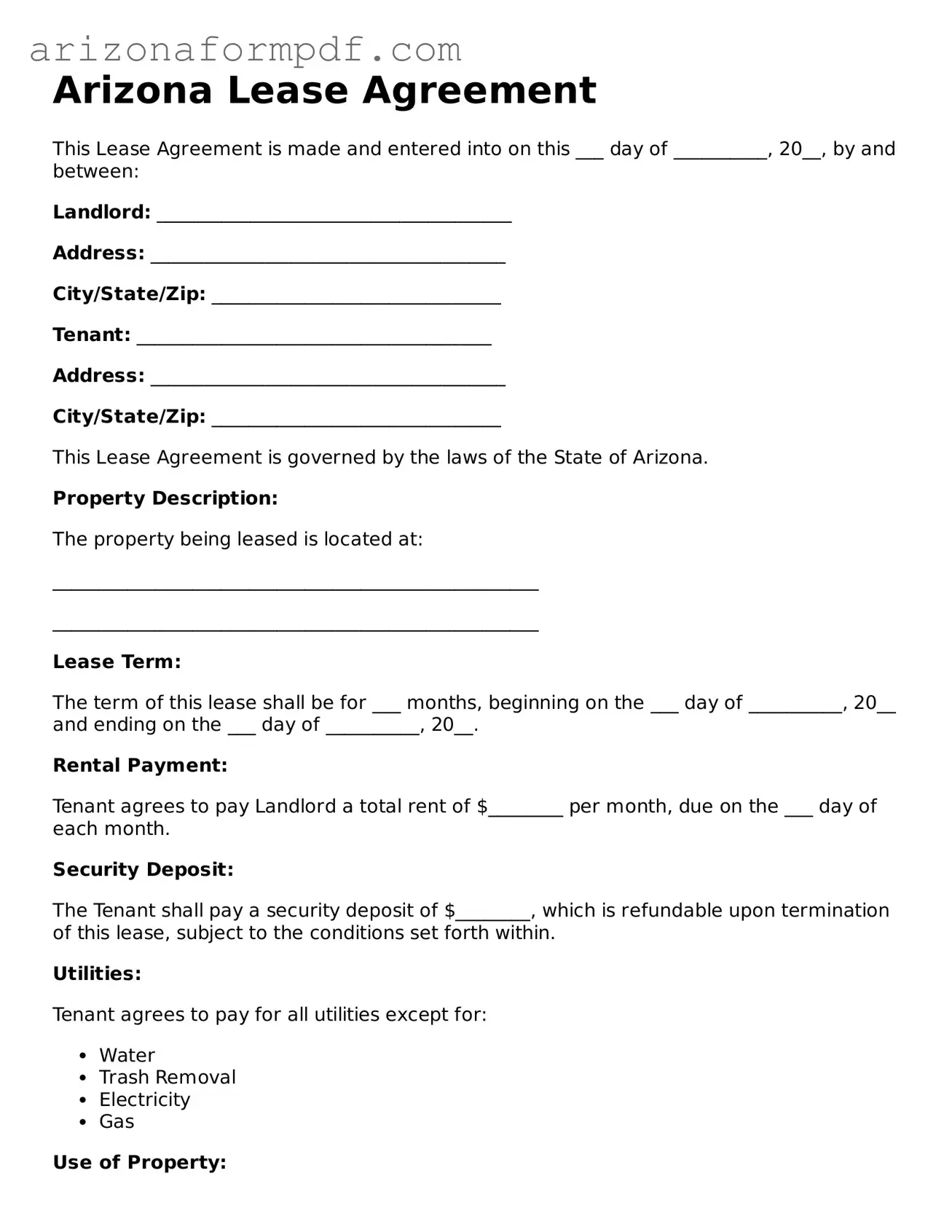Arizona Lease Agreement
This Lease Agreement is made and entered into on this ___ day of __________, 20__, by and between:
Landlord: ______________________________________
Address: ______________________________________
City/State/Zip: _______________________________
Tenant: ______________________________________
Address: ______________________________________
City/State/Zip: _______________________________
This Lease Agreement is governed by the laws of the State of Arizona.
Property Description:
The property being leased is located at:
____________________________________________________
____________________________________________________
Lease Term:
The term of this lease shall be for ___ months, beginning on the ___ day of __________, 20__ and ending on the ___ day of __________, 20__.
Rental Payment:
Tenant agrees to pay Landlord a total rent of $________ per month, due on the ___ day of each month.
Security Deposit:
The Tenant shall pay a security deposit of $________, which is refundable upon termination of this lease, subject to the conditions set forth within.
Utilities:
Tenant agrees to pay for all utilities except for:
- Water
- Trash Removal
- Electricity
- Gas
Use of Property:
The leased property shall be used strictly for residential purposes.
Alterations:
Tenants must obtain written permission from the Landlord before making any alterations to the property.
Pets:
Pets shall be allowed/not allowed (choose one). If allowed, any restrictions concerning size and type: ____________________________________.
Termination:
To terminate this agreement, either party must provide a written notice of at least ___ days.
Signatures:
Landlord's Signature: ____________________________________ Date: __________
Tenant's Signature: _____________________________________ Date: __________
This Lease Agreement forms a binding contract between the parties, governed by the rules and regulations of the State of Arizona.
